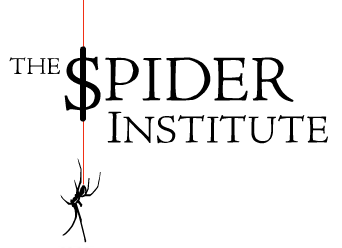The New, Expanded Axis of Evil
In the aftermath of the 9/11 attacks, President George W. Bush coined the term “axis of evil” to describe Iran, Iraq, and North Korea. He highlighted the potential threat posed by these states and their terrorist alliances, emphasizing the danger of them acquiring weapons of mass destruction. Over the years, this concern about arms proliferation to terrorist groups has only intensified.
He went on to say: “States like these, and their terrorist allies, constitute an axis of evil, aiming to threaten the peace of the world. By seeking weapons of mass destruction, these regimes pose a grave and growing danger. They could provide these arms to terrorists, giving them the means to match their hatred. They could attack our allies or attempt to blackmail the United States.”
His point about the Axis providing arms to terrorists has certainly grown in volume and financial support and is so true today.
Much has changed since President Bush’s tenure, including the Axis. It is no longer relatively small, failed states. The Axis includes more countries with larger economies, bigger militaries and, worst of all, expansionist visions.
One thing that hasn’t changed: All the Axis powers, and many of their aligned countries, are run by strong-man authoritarians who are largely insulated from being ousted by the public for their actions. Without Saddam Hussein, Iraq isn’t quite the same problem.
Focusing on Iran, that theocracy that has played a central role in destabilizing the Middle East, particularly with its progress toward 90% uranium enrichment and nuclear weapons development. Recent policy shifts, including the removal of economic sanctions by the current administration, have raised unanswered questions about the effectiveness of appeasement.
Flush with newfound resources, Iran has increased its support of various terror groups, using them as proxies in conflicts that extend to attacks on Israel and U.S. outposts. From the get-go, this administration has exercised its policy of appeasement with the Iranian regime. That policy hasn’t worked.
Now flush with cash compared previous years, Iran has created and supported numerous terror groups in the Middle East. Most recently those groups have become the proxies of Iran in attacking Israel and U.S. outposts in the region. Where do we think those proxies are getting the arms and missiles? Everyone knows it, particularly Russia and China.
In addition to supplying armed drones and missiles to its Middle East proxies, it’s supplying Russia with drones and selling ammunition and oil to China.
The current administration attempted to incur economic sanctions on Russia in response to its war with Ukraine which have miserably failed. Being oil and gas rich itself, Russia has maintained its huge markets for its fossil fuel resources in Europe and elsewhere.
So, why the hesitation to re-impose economic sanctions on, and ‘de-fang’ Iran?
A major part of the U.S. problem is this administration’s bent on eliminating fossil fuels. Immediately following its assumption of the White House, this administration saw to it the U.S. became once again dependent on foreign oil. Re-imposing economic sanctions on Iran would significantly reduce their oil sales, but in doing so it would increase even further the price of oil on the world markets – and commensurately on the already elevated inflationary pressure being experienced in this country. The old question remains: “Will you cut off your nose to save your face?”
EU countries that initially imposed some sanctions against Russia have been backing off for the same reasons – dependence on oil. Hungary killed the latest attempt by EU countries to continue those sanctions.
While immediately totally supporting Israel going after Hamas in the Gaza Strip after its genocide of Israelis/Jews last October 7, this country’s stance has softened to now echo some of the shouts for an indefinite cease fire there. At the same time, radical academics have become outspoken about their antisemitism and their students and recent alumni have taken to the streets in support of Iran-backed Hamas.
Those who would suggest our foreign policy is a jumbled mess now are ‘right on.’
We’re supporting a regime in Ukraine fraught with past and likely ongoing corruption and not an ally – and questioning our support for our only Middle East ally, Israel. President Biden’s major outspoken reason for Ukrainian support was to unseat Putin as president of Russia. If anyone who thought that was going to happen, and still will, is invited to place a nonrefundable escrowed bid on buying the Brooklyn Bridge. The chances of owning that span over the East River are the same as Putin being defrocked.
The 2024 version of the Axis of Evil is a the addition of even more formidable enemies, perceiving the United States as weak. They’re not wrong. The nation’s perceived political divisions and the reluctance to present a unified front contribute to this perception. The challenge extends to recruiting enough military personnel and allocating sufficient funds to address the growing threats to the United States.
Understanding the multifaceted nature of global relationships and the evolving dynamics of the Axis of Evil is crucial for the United States to navigate and address emerging challenges effectively.
It’s a good thing that this is an election year. We have the choice of re-growing a backbone.
References:


